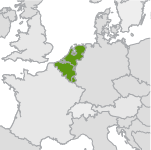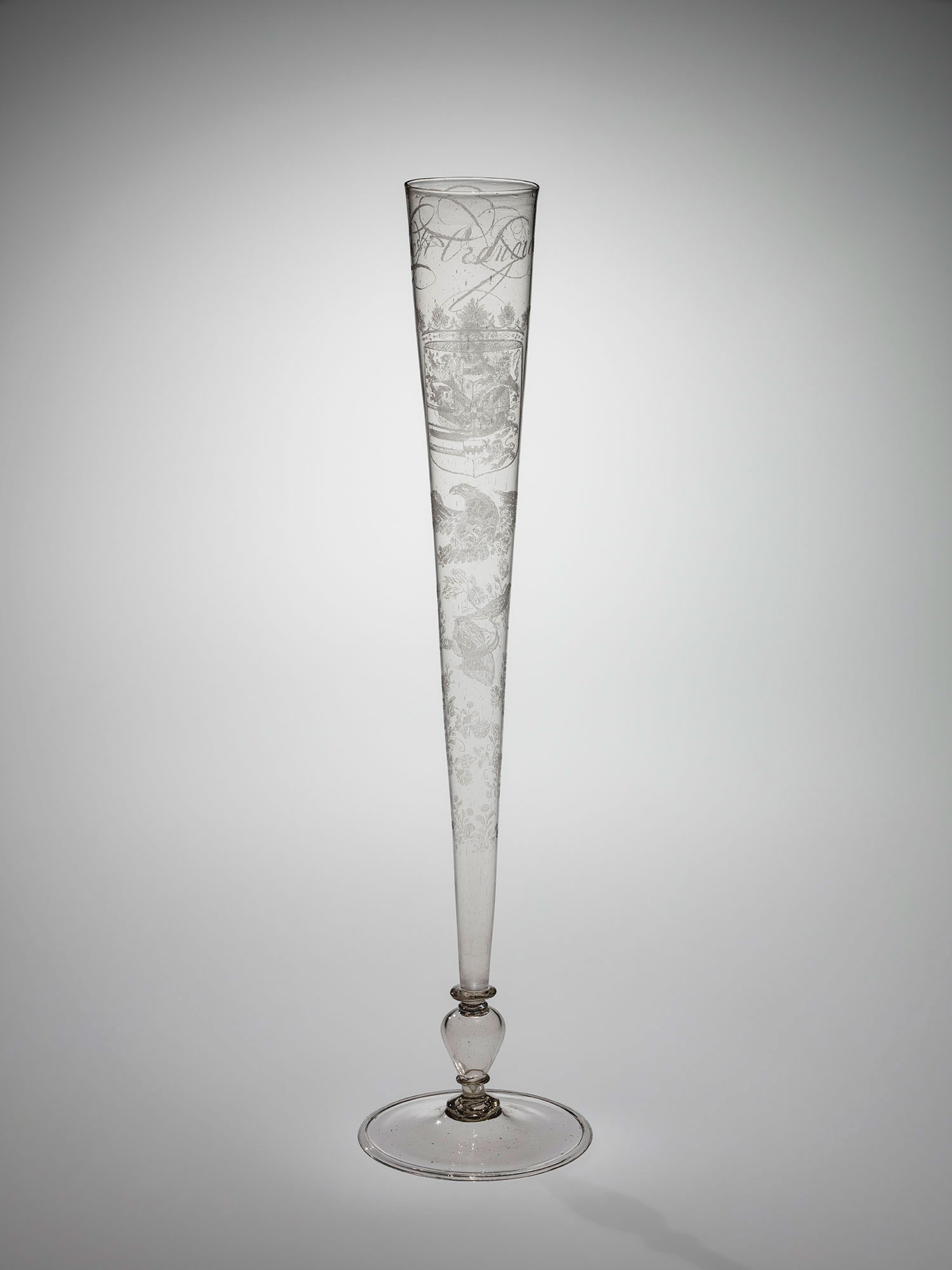Tall flute
Tall Flute
The video shows a soft bubble of glass being forcefully pulled by its end to become long, narrow, and tapering to a point. After mereses, a stem, and a foot are made, the vessel is transferred to a pontil and the opening is shaped.
Transcript
The vessel was made in three parts. This gather will become the long flute. The glass is marvered back and forth. Air is blown into the blowpipe, and the tip left thick and cooled by tip marvering. After a reheat, the bubble is inflated further, a constriction made near the blowpipe, and the glass is rather aggressively pulled outward. The blow hose is used to gently blow air into the blowpipe as this continues. The constriction near the blowpipe is refined in shape and, after reheating, the outer half of the bubble is elongated further. The tip is retrimmed. The glass reheated. The jacks are held against the sides as air is blown into the blowpipe, and this drives air outward and makes the flute longer. A tiny amount of glass (freshly gathered from the furnace) is added to the tip. And this will become a merese with a slight bulge at its end. There's the bulge. And a blade on either side creates the sharp edge characteristic of the merese.
A second bubble is lowered onto the tip. It's cut free of its blowpipe, and decorative constrictions are made. The tip is trimmed. And another small bit of glass (freshly gathered from the furnace) is added to the tip of the stem. This is pressed, pushed upward, a blade on either side creates a sharp edge, and a second tiny gather is added to the tip of the merese. The glass is tooled to produce a spool-shaped construction. The vessel was flashed deep in the furnace to ensure that the entire structure is well over 1,000 degrees Fahrenheit, and a third bubble is added from above. This will become the foot. The constriction is held, the tip broken away, and this leaves a hole.
After reheating, the hole is dilated. The entire foot bubble is slightly softened. The soffietta is used to inflate the bubble further. The lowermost part of the stem is blown to cool it. During reheating, the stem unavoidably softens slightly. The flute has a folded edge at its foot. It's a double thickness of glass that's both attractive and strong. The foot is given its final shape. The punty is added. The constriction near the blowpipe is held with the pincers and a slight tap breaks the neck. After reheating, the hole is opened slightly. And the upper third or so of the bubble is slightly softened, and the soffietta used to carry upward the angle established on the blowpipe. The entire vessel is flashed deep in the furnace to make sure that the foot is sufficiently hot. It's lowered into the annealing oven, and with a gentle tap of the pincers on the punty, the vessel is left in the annealing oven to cool gradually.
See all: Browse by Map


